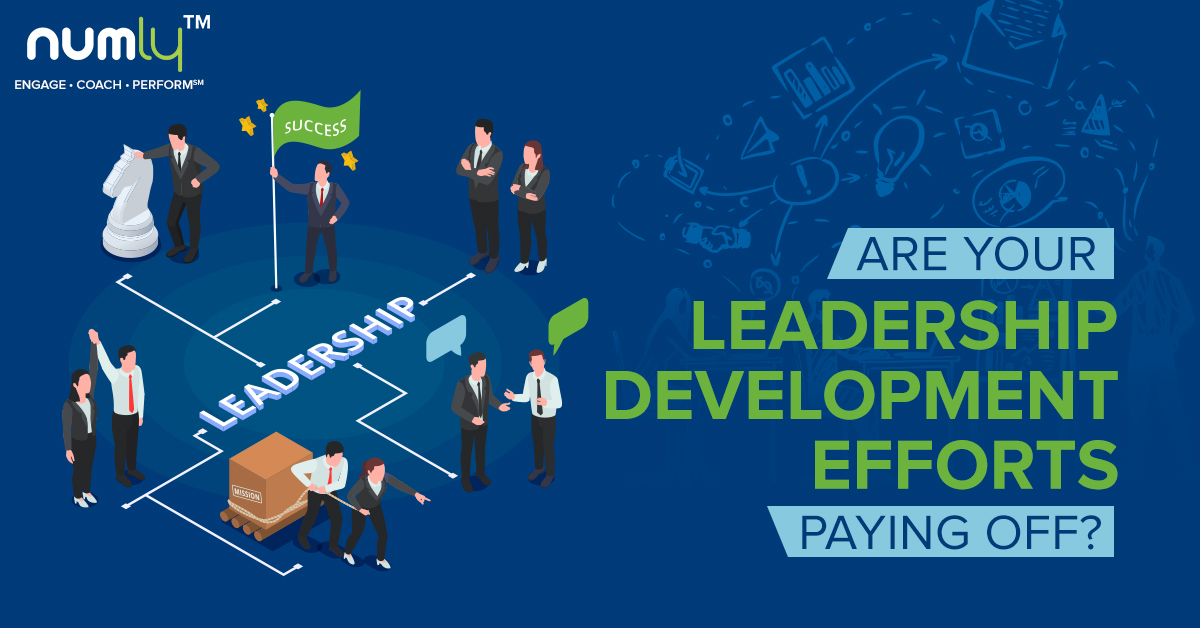According to a Gallup poll, only 34% of respondents believed that their supervisor fosters open communication and a healthy work environment. Further, only 22% expressed trust in the leadership of their respective organizations.
Favorably, organizations today recognize the significance of employee engagement and high-quality leadership. As a result, leadership development programs have become common and important in organizations working to improve their senior management and employee engagement initiatives. However, measuring and evaluating the success of these programs is just as important as running them. Harvard Business Review has previously outlined how 50% of senior leaders believe that their L&D efforts are not producing the desired results.
There are several methods for ensuring the authenticity and smooth operation of a leadership development program. But first, let us define what a leadership development program is.
Every organization requires its leaders to improve and grow. Initiatives and activities that promote and drive such growth and skill enhancement can be classified as leadership development programs. These activities are carried out to ensure that leadership is top-notch, which eventually results in improved employee retention, productivity, succession planning, and more.
But how can we ensure that the program is a success? Let us take a look.
Asking the Right Questions for Proper Evaluation
What does leadership mean for us?
Every organization has its own definition of leadership. For some, it can be a means of increasing efficiency and improving team engagement. For some, it can be a way to advance in business while empowering all employees to give their all. Finding the right why(s), what(s), and how(s) is critical for any leadership development program to be successful. Thus, the first step in evaluating the program would be to define the outcome and analyze the program based on it.
What are the success metrics?
The metrics used to define the success of a leadership development program are as important as defining the leadership ambit. Companies must develop an individualistic as well as a holistic view of the program and the associated success metrics. This is easily accomplished by soliciting feedback or holding one-on-one sessions to understand the program’s positive and negative aspects.
What are the tangible and intangible outcomes here?
Every program has a predetermined outcome model, whether driven by tangible or intangible outcomes. Intangible factors also play a significant role in leadership development. For instance, how leaders handle challenges at work, how they communicate with their subordinates and superiors, etc., are factors that have a bearing on the success of leadership.
Leaders must demonstrate a variety of soft and hard skills. To that end, the development program can focus in various directions, such as improving sales calls or demonstrating more empathy to juniors. Identifying and documenting these outcomes is a critical step in determining the success of the leadership program.
Is the program well delivered and accepted?
Is the program accomplishing its goals for the people it was designed to help? Many times, organizations create programs that do not cater to the needs of the audience. Therefore, special consideration should be given to the people who will be participating in the program. Obtaining feedback from program participants should be an essential step in determining the success of the leadership program.
Professor Donald L Kirkpatrick curated a model for assessing the success of a leadership development program. He discussed the four steps to defining the success of a leadership program in his book, “Evaluating Training Programs: The Four Levels.” These four levels are Reaction, Learning, Behavior, and Results. According to him, the four levels are almost like questions, and as a result, the methodology can be applied to any organization and its learning development program.
Reaction is all about understanding the perception and acceptance of people who are involved in such programs. Learning refers to the desired outcome of the initiative. This can include learning new skills or improving current behaviors in order to become a better leader as a result of the leadership development program. Behavior is the application of knowledge gained through the program. Finally, the results are the end outcomes.
Many parameters can be used to evaluate a leadership development program, depending on how people perceive it and how well is the visibility of the outcome.
Finding the Bottlenecks and Measuring Effectiveness
After determining whether the program is well-executed, organizations can focus on identifying problems and measuring the program’s effectiveness. The creators or management can understand the scope of improvement by evaluation.
Here are some questions to consider when assessing the program’s effectiveness:
- Was the program helpful in honing skills and achieving goals?
- Is the training module or method suitable and simple to use?
- Have people gained anything valuable from the program, or was it a null-and-void zone?
- Did the training help in filling a skill gap or meet a work-related requirement?
Once the answers are in, it is simple to identify bottlenecks and determine whether people are being helped or not.
Wrapping Up
Leadership development programs are essential for every organization. Employees today are not looking for bigger brands but rather better leaders. Organizations have had to assess and re-assess their culture and the nature of their leadership, and rightly so.
Give you leadership development programs a boost with Numly’s Connected Leadership Platform. Connect with us to know more.

